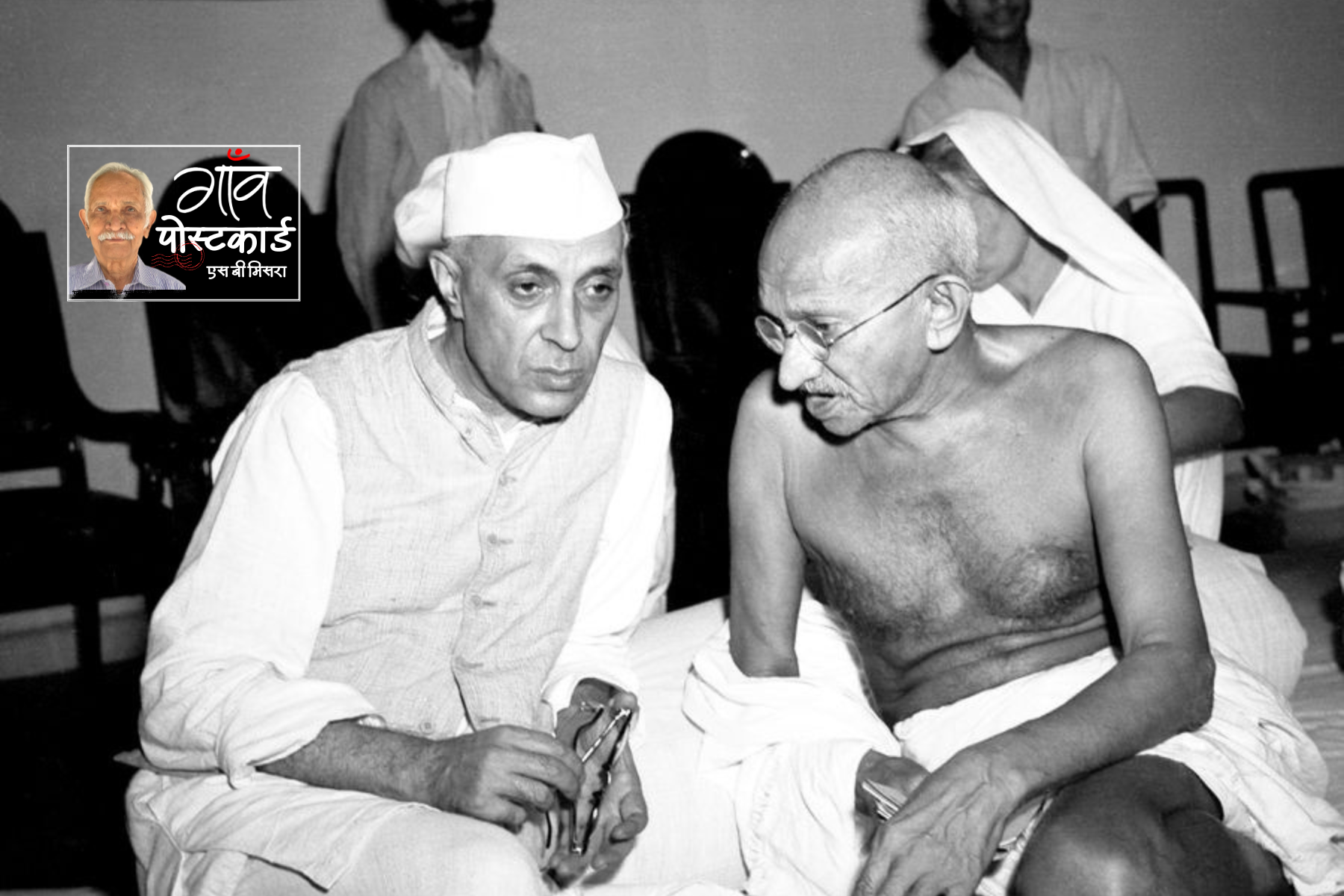Mithilesh Dubey/ Arvind Shukla/ Diti Bajpai
“On December 2, 2018, I went to the market to sell 20 quintal onion as I wanted cash for my next produce. When I reached the market, I realised onion was selling at Rs 50-80 paisa per kilo; which meant I would have got Rs 1,000 for 2,000-kilo onions. I had spent Rs 600 to transport onions to the market. I am not even talking about the amount I had spent on the produce,” said Kuldeep Patidar, who lives Bhimsukh village in Neemuch district in Madhya Pradesh.
He added: “I wouldn’t have sold onion at such low rates. I was angry. There was no facility to store so many onions. I fed it to animals. After that, I stopped producing onions. When I went to the market today, I learned that onion is selling at Rs 70-80 per kilo. Onion prices have gone up, but now farmers don’t have onions to sell.”
Onion prices have skyrocketed across the country. It’s selling between Rs 60 and Rs 80 per kilo. To control onion prices, the central government has decided to import 2,000-tonne onion. The first lot has arrived from Afghanistan.
Costly onion is making citizens cry. Shiv Shankar Yadav, who lives in Badshah Nagar in Lucknow, said: “I work in the private sector. How can I afford to buy onions at Rs 80-90/ kilo, which are costlier than Apples? We have stopped eating onions. I will buy again once the prices stabilise.”
Watch the video here:
Do increased prices benefit farmers?
If onions are selling at 50 paisa per kilo in the wholesale markets, why is the common man paying Rs 80 to buy onions? Are these increased prices benefiting farmers?
When asked to comment on this, Krishna Patidar, a farmer who lives in Harsola village, 40 km from Indore, Madhya Pradesh said: “You are talking about profits? we couldn’t even breakeven.”
Talking about the Math behind spiraling onion prices, Patidar said: “To sow onion in a one-acre field, we have to buy seeds worth Rs 5,000. The whole process of sowing costs us Rs 5,000. The medicines and pesticides cost us Rs 15,000.”
He added: “When the crop is ready, we have to hire labourers, which costs us Rs 7,000-8,000. So, we end up spending Rs 30,000-35,000 to producing around 100 quintal onions; which means at Rs 5 a kilo, we produce onions worth Rs 5,000. I have not included irrigation and transportation cost to this.”
One kilo onion cost farmers Rs 10-11. The farmers earn profit only when they get Rs 1,500 per quintal, said Krishna.
Last November, Maharashtra-based farmer Baswan Godar sold 1,890-kilo onion for Rs 1,681.50. He spent Rs 180 on labour, Rs 55.70 on weight and Rs 1,994 on transportation. This amounts to Rs 2,229.70. He had to spend Rs 548 from his pocket to return from the wholesale market to his home.

Avinesh Kakde, head of Kisan Seva Sangh, Maharashtra, said: “The farmers don’t have onions and the prices have skyrocketed. The government is not doing anything about it. Our policies are weak. Farmers always end up making loses. When we produce something, the prices go down. The government should take over at this stage.
Talking about the onion prices, Dr Sen Chandra, professor of Agri-Business Management at Banaras Hindu University, said: “The ruling political parties and the opposition; they all have played politics over onion, but they never tried to understand the reality behind increasing onion prices. The buyers live in cities, so when there is bruhaha over high prices, the government is compelled to act. Though the farmer is at the center of Indian politics, but they are used only as vote banks.”
When Gaon Connection visited Nashik and met farmers who had arrived from Bijapur, they all said they are at a loss because of a hike in onion prices. Only those companies are getting benefitted to whom we had sold onion at Rs 5-15. They all want the government to open up more storage facilities for these farmers so they can store onion and sell when the prices go up. This way they would be able to earn some profit too.
Why have the prices gone up?
In 2018-19, India exported 2.1 crore quintal onion worth Rs 3,468 crore. We didn’t import onions at all. In 2017-18, India had imported 6,5925.85 quintal onion at Rs 11 crore and exported 15.88 lakh quintal onion worth Rs 3,088 crore.
But the situation in 2019-2020 is not looking very positive. To contain the spiraling onion prices, the government is importing 2,000 quintal onion, when we have already exported 35.23 lakh quintal onions this season. These numbers are for April-May 2019.
When we were selling onions to other countries, the onion prices at the largest onion market in the country, Lasalgaon in Nashik, stood at Rs 500-1,000 per quintal. Exactly three months later, when we are asking other countries to send us onions, the onion prices at Lasalgaon have touched Rs 2,300-4,000 per quintal. When the farmers had stock, we sold it at cheaper rates, and now we are buying at a higher cost.

Gaon Connection editor-in-chief SB Misra blames poor import-export policies. “When the demand goes up, the supply goes down. The government imports goods to calm those living in the cities. This is what happened in the case of onion. When we had a bumper crop, the decision to export it was not taken at the right time. If the decision to import or to export is taken at the right time, the farmers would get benefitted and the common man would not have to suffer.
Rajendra Sharma, who deals in Azadpur mandi in New Delhi, and is the head of Onion Merchant Association, blamed bad weather for the present situation. “Because of heavy rains in Southern India, the onion prices have gone up. The produce got ruined in Karnataka and Maharashtra because of rains. It’s raining non-stop in the North and Central India, which is why onion is not reaching other states.
The numbers show that Madhya Pradesh has received above average rain this year. Of the total 51 districts, eight districts have received above-average rains. Maharashtra has also received heavy rains. Out of the 36 districts, eight have received heavy rains and eight have received above-average rainfall.
“The first lot of onions has reached from Afghanistan. They sell onion at Rs 30 per kilo, which is quite high for retailers here. Hence these onions are not very popular. The prices are likely to fall when it will stop raining,” said Rajendra Sharma.

“Sellers are to be blamed for this situation”
On an average, in September, we sell onions worth 6-6.5 metric tonne at Rs 10-20 per kilo. But the situation has changed since 2015. In 2015, only 3.4 metric tonne onion reached markets. This year, so far, only 3.1 metric tonne onion has reached markets until September 24.
“The onion is selling at Rs 40 per kilo in the wholesale market. Every day 50-60 trucks having stock worth 20-25 tonne are arriving. The prices will come under control as soon as it will stop raining,” said Sharma.
According to the National Agricultural Cooperative Marketing Federation of India (NAFED), the cooperative based in Delhi still has 30,000 tonne of onions. It is selling onion to West Bengal, Punjab, Odisha Assam, New Delhi, and Kerala.
The organisation, a few days back, had said that the country had enough stock and there was no need to import onion. According to NAFED, the sellers are to be blamed for this situation as they don’t sell onions till the prices go down.
According to a survey conducted by the Central Institute of Post-Harvest Engineering and Technology in 2012, in India of the total onion produced in the country, 20% is with the farmers and 18.1% is kept in cold storages. The whole sellers and retailers have 38% and 22.3% stock respectively.

Unavailability of storage is a big issue
According to a report by Emerson Climate Technologies India, fruits, vegetables and grains worth Rs 44,000 crore get damaged every year. According to another report, there is a need for 6.1 crore tonne cold storages in our country. The report mentioned that every year, because of a lack of cold storage, 10 lakh tonne of onion is not able to reach local markets.
Shivaji Bhimba Aaher, a farmer based in Maharashtra said: “I had 1,300 quintal onion. When I started selling, it was selling at Rs 900 per quintal. Now it’s selling at Rs 3,640. The farmers will earn profit, but now they don’t have stock. If they have, it’s not selling. I still have 20-30 quintal onion, which is rotting.”
He has made a storage with the help of the subsidy he received from the government, but it’s not as good as the actual cold storage.
As per the government report, In India, 6,300 cold storages are having a capacity of 3.1 crore tonne. We need a cold storage capacity of 6.1 crore tonne.
Krishna Kumawat, 39, a farmer based in Mandsaur, Madhya Pradesh, said: “There is no space in cold storages. Moreover, they are far away.”
The Associated Chambers of Commerce of India’s former director, DS Rawat, had said last year, “In India, 6,300 cold storages are having a capacity of 3 crore tonne. Of the total perishable goods, only 11% get stored.

What about the next season?
It’s still raining in Maharashtra and Madhya Pradesh which has ruined many onion nurseries. In these states, the sowing of onion starts by September last week.
Meena Jadhav, who lives in Vadali Bhui village in Nashik, Maharashtra, is worried as she was planning to sow onion in her one-acre farm. “The onion nursery is ruined because of heavy rain. I won’t be able to sow even in 50% of the field.”
According to the Brihanmumbai Municipal Corporation, Maharashtra has received heavy rainfall until September 16. Ashok Patidar, who lives in Dattotar village in Devas district in Madhya Pradesh, said: “Last year I had sowed onion in my three-acre farm. This year the nursery is flooded. I don’t think I would be able to produce onion this year.”
What is the government doing?
To contain the spiraling onion prices, the government is importing 2,000-tonne onions. The first lot has arrived from Afghanistan. Ram Vilas Paswan, the Consumer Affairs, Food and Public Distribution Minister, has sent two ministers to Maharashtra to contain the situation. They will talk to the traders and transporters so that onion reaches different states.
बाजार में प्याज की आपूर्ति बढ़ाने के लिए दो संयुक्त सचिव स्तर के अधिकारियों को महाराष्ट्र भेजा गया है। ये वहां के किसानों, व्यापारियों और ट्रांसपोर्टरों से बात कर प्याज की उपलब्धता की समीक्षा करेंगे और उन्हें ज्यादा से ज्यादा प्याज बाजार में लाने के लिए प्रेरित करेंगे। @PMOIndia
— Ram Vilas Paswan (@irvpaswan) September 26, 2019
The government has sent a notice to the states that for retail sale the states should use the buffer stock. So far Haryana, Andhra Pradesh, Delhi, Tripura, and Odisha have asked for buffer stock.




















